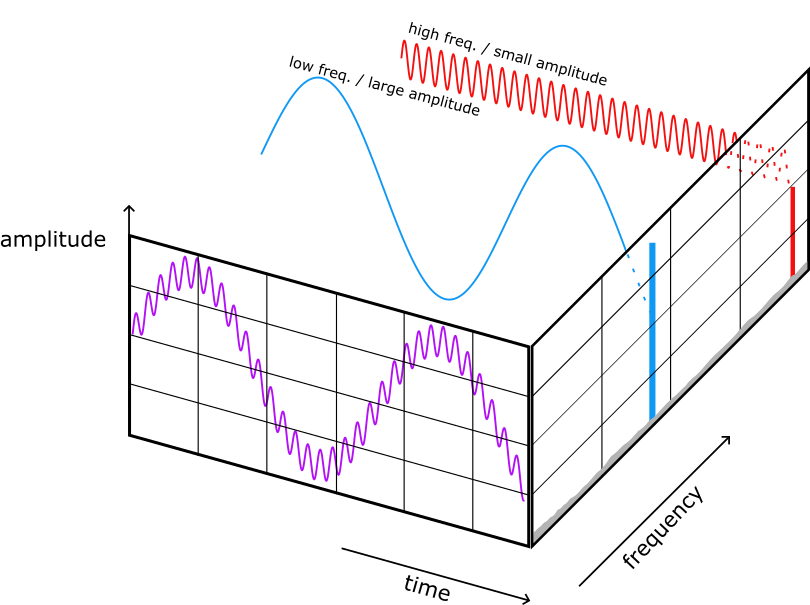3. Signal Processing#
Attribution
This chapter is written by Christiaan Tiberius. Find out more here.
The goal of this week is to be able to identify and analyze frequency components in a signal; this is referred to as spectral analysis. The following chapters are told in a story-like sequence that will guide you through this process naturally.

We generally work with recordings of a signal in the time domain. Since it can be difficult to interpret such a signal, we will explore techniques for converting and evaluating this record in the frequency domain. The story first begins with a theoretical perspective (e.g., working with continuous-time functions), after which we consider the discrete-time case. The latter is what we use in practice. Our objective is to understand and work with signals that have been measured and recorded, i.e., understand and work with a discrete-time data set.
MUDE Exam Information
Proofs and derivations are provided in this textbook, but will not be asked in exam; there is no need to memorize equations, which will be provided at the exam, as needed. Instead, you are expected to apply the theory to actual problems (problem solving), and interpret the results (as obtained with a Python Notebook). Although all of the chapters are needed to understand the complete Signal Processing story, for the exam it is recommended to focus on two chapters in particular: Sampling and Discrete Fourier Transform. In-class activities (not in this book) are also relevant; for example, the Jupyter notebook assignments of the workshop and the project.
